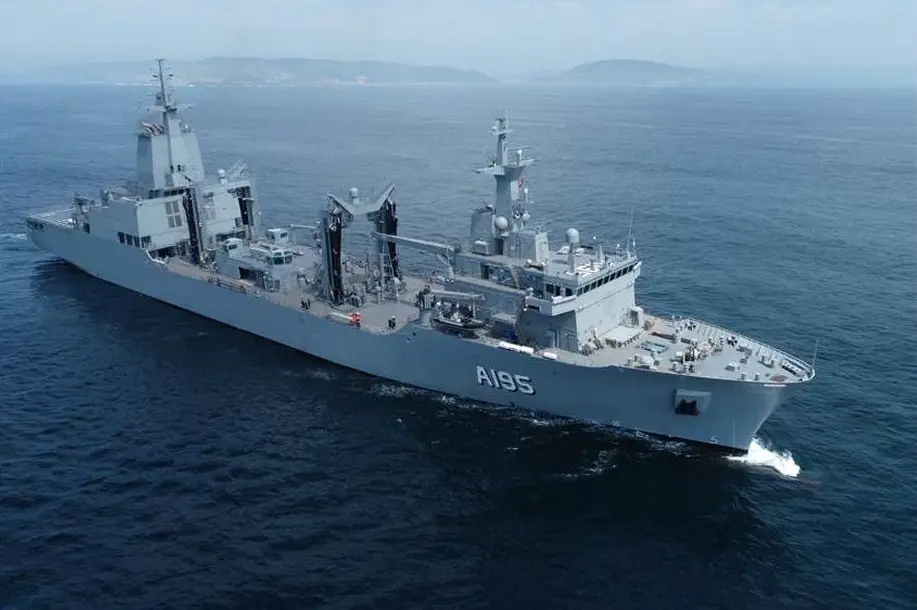Royal Australian Navy newest HMA NUSHIP Supply Class Auxiliary Oiler Replenishment (AOR) ship, recently completed Sea Acceptance Trials ahead of sailing from Ferrol to Australia later this month for her Australian fit-out. HMAS Supply, is planned to enter service in 2020, with full operational capability scheduled for 2022. The second Supply Class vessel, HMAS Stalwart, is expected to enter service in 2022. Sips Success and Sirius will be replaced with a single class of double-hulled, AOR ship to be built by Spanish shipbuilder Navantia. The two Australian ships are based on the Spanish Navy’s Cantabria Class AORs.
The ships are intended to carry fuel, dry cargo, water, food, ammunition, equipment and spare parts to provide operational support for the deployed naval or combat forces operating far from the port on the high seas for longer periods. In addition to replenishment, the vessels can be used to combat against environmental pollution at sea, provide logistics support for the armed forces, and to support humanitarian and disaster relief operations following a natural disaster. HMAS Supply was launched at the Navantia Shipyards in Ferrol, Spain, on 24 November 2018. The following day, the Chief of Navy, Vice Admiral Michael Noonan, positioned a coin under where the hull will be constructed for Stalwart.

The Supply class is a planned class of replenishment oilers of the Royal Australian Navy, a role that combines the missions of a tanker and stores supply ship. As such they are designated auxiliary oiler replenisher (AOR). They will be tasked with providing ammunition, fuel, food and other supplies to Royal Australian Navy vessels around the world. There will be two ships in the class, Supply and Stalwart. The project is expected to cost anywhere between $1 and $2 billion. Navantia were selected to build a design based on the Spanish Navy’s current replenishment vessel Cantabria, which entered service in 2011.
Cantabria (A15) is a replenishment oiler operated by the Spanish Navy. Acquired to provide logistical support for the Spanish fleet, She was commissioned in 2010. Cantabria is the second-largest ship currently operated by the Spanish, behind Juan Carlos I. Cantabria is a replenishment oiler. She was acquired to provide logistical support to the Spanish Navy during day-to-day operations, expeditionary forces or strategic projection deployments, and for humanitarian and disaster relief operations. The vessel has a displacement of 19,500 tons, is 170.4 metres (559 ft) in length, has a beam of 23 metres (75 ft), and a draught of 8 metres (26 ft). The ship’s capacity includes 8,920 cubic metres (315,000 cu ft) of ship fuel, 1,585 cubic metres (56,000 cu ft) of JP-5 jet fuel, 215 cubic metres (7,600 cu ft) of fresh water, 280 tons of ammunition, and 470 tons of general cargo.












